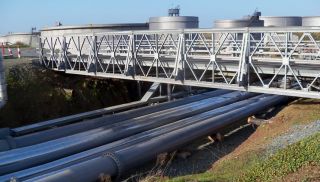Our website is set to allow the use of cookies. For more information click here. If you are happy with cookies for advertising and personalisation, please click “Accept and continue” or simply continue browsing.
Nubia Bridge, Madang, Papua New Guinea
- Infrastructure, Transport, Government
- Bridging, Engineering and Project Services
- Madang, Papua New Guinea
The Challenge
A remote coastline road, linking the Madang, Bogia and Sepik communities in the Yawar region of Papua New Guinea, had become impassable more than two years ago because an old bridge had washed away through tidal erosion. The local people were severely affected as they obtained their income primarily from trading cocoa, copra, fishing and betel nuts. For the last two years, the only access to the area was at low tide, which restricted movement for the locals.
Back to topThe Solution
As part of an infrastructure scheme for the wider region and funded through the Papua New Guinea-Australia Transport Sector Support Program (TSSP), a new and longer steel bridge of 39m was specified to cater for the high tides. Mabey Bridge worked with the appointed contractor, Markham Culverts, to deliver the project because of their extensive experience in the supply and installation of modular bridges throughout the country. Markham Culverts provided an on-site Engineer for technical guidance throughout the project, with support from the technical team at Mabey Bridge in the UK.
A 13 bay Compact 200™ bridge was installed, designed for vehicular and commercial traffic. The local people were very helpful, assisting the contractors in any way they could.
Back to topThe Result
The replacement bridge was delivered by the Department of Works with support from the Papua New Guinea-Australia Partnership. It was officially opened in May 2020 by the Bogia MP, Provincial Department of Works and the Australian High Commission.
The bridge has undoubtedly had a positive effect on the whole region, including direct and improved access to nearby health centres and schools. It has radically improved the livelihoods of the surrounding communities, who are now able to transport their produce to sell at the markets in town. Travel has been made safer, and travel times have been significantly reduced, all of which has brought a huge amount of relief and joy to the people of Madang.
Back to top













